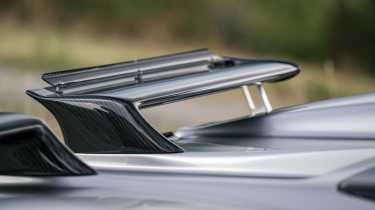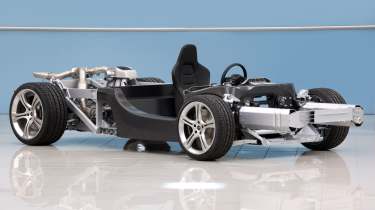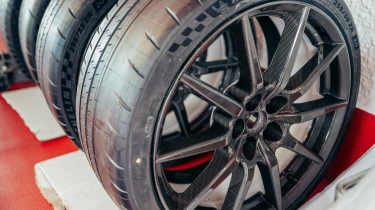The European Parliament could try to ban carbonfibre
Carbonfibre has come under attack from European legislators, who are citing the health risks it poses when damaged

The European Parliament could classify carbonfibre as a ‘hazardous material’ and potentially limit its use in production cars. This, if amendments to the End of Life Vehicle (ELV) directive, looking at the circularity of cars and their recyclability, go through. There could be exceptions, but whatever is decided, will take effect in Europe from the beginning of 2029.
In what you can imagine is an enormous 115-page document, ‘carbon fibres’ as they’re called in the draft are mentioned precisely three times, during amendment 77, amendment 78 and amendment 79. Here, carbonfibre is added alongside lead, mercury, cadmium and hexavalent chromium, as materials for which a maximum amount allowed to be used in a car must be established, and if their use is avoidable, they should be ‘deleted’ from use in cars.
Needless to say, should the use of carbonfibre receive the legislative cold shoulder, the automotive industry will be significantly affected. Its use is widespread, in everything from the fundamental structure of some cars, to various components from interior and exterior trim pieces, engine intake systems, prop shafts, wheels and more. Its combination of stiffness and low weight makes it irresistible for engineers, its only downsides being the time and cost to manufacture components, and how costly it is to repair.

The obvious first marque that springs to mind is McLaren, which, since its debut as a full-blown carmaker in 2011 in McLaren Automotive form, has constructed all of its cars with a carbonfibre monocoque at their heart. Likewise, more boutique manufacturers like Bugatti, Pagani and Koenigsegg.
Numerous manufacturers, from supercar marques like Lamborghini and Ferrari, to higher-volume high-end companies like Porsche, BMW, Mercedes, Audi and more, use carbonfibre in innumerable ways, from whole chassis for specialised models, to tiny trim pieces. It's well-loved as a decorative element in cars. The profit margins of all performance car proprietors look decidedly healthier for their offering carbon interior and exterior styling elements for a three-, four- or five-figure premium.
These figures are of course, nominal by comparison to those of the global carbonfibre industry. Because before cars, carbonfibre was used in the aerospace industry, among many others. The car industry accounts for around a fifth of the global carbonfibre industry, which was worth over £4billion in 2024. It’s projected to be worth over £12billion in 2035, if it grows at the projected average rate of 11 per cent a year.
The problem with carbonfibre

Carbonfibre is totally harmless when bound within the resin that coats the various components it’s shaped into – from entire monocoque chassis tubs, to alloy wheel centre caps. Ironically, cars that use carbonfibre in their core construction are considered extremely safe, due to the energy absorption and dissipation properties of the material. Its adoption in Formula 1 in the 1980s immediately made the cars much safer, as well as lighter, stiffer and therefore faster.
The concern is how it behaves when damaged, or when it’s broken apart, say, for recycling. As we’ve seen numerous times when accidents happen in motorsport, carbonfibre tends to shatter and, apart from the large pieces you see streaking across a circuit, thousands of tiny filamentous shards are also emitted into the air. These shards are small enough to cause skin irritation and, if inhaled or ingested in significant enough amounts, more serious health issues. It’s for this that carbonfibre is in the line of fire from legislators.
At a time when microplastics are a hot health topic, you can see why carbonfibre has come under scrutiny. But an outright ban (if not some regulatory guidelines encouraging the evolution and development of carbonfibre to be safer when broken or recycled) would be overkill. It would also be a slippery slope, given the risks many materials of its like pose when shattered – fibreglass or just… glass, to name a couple. More as we have it.




